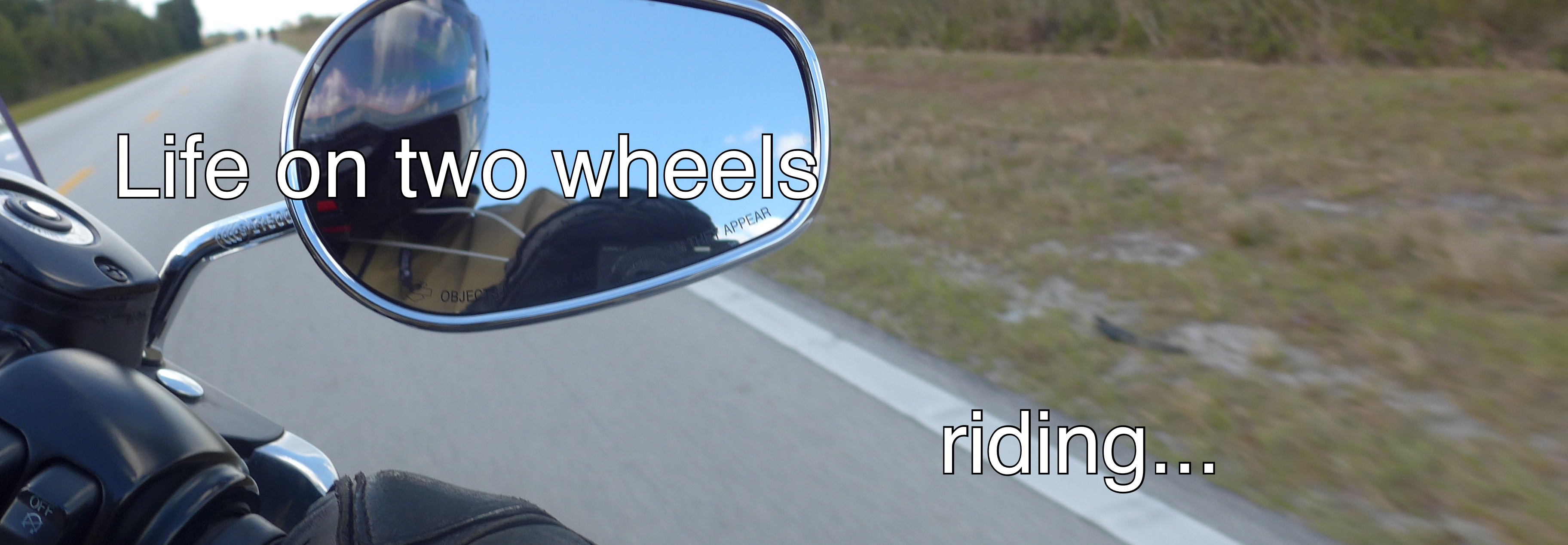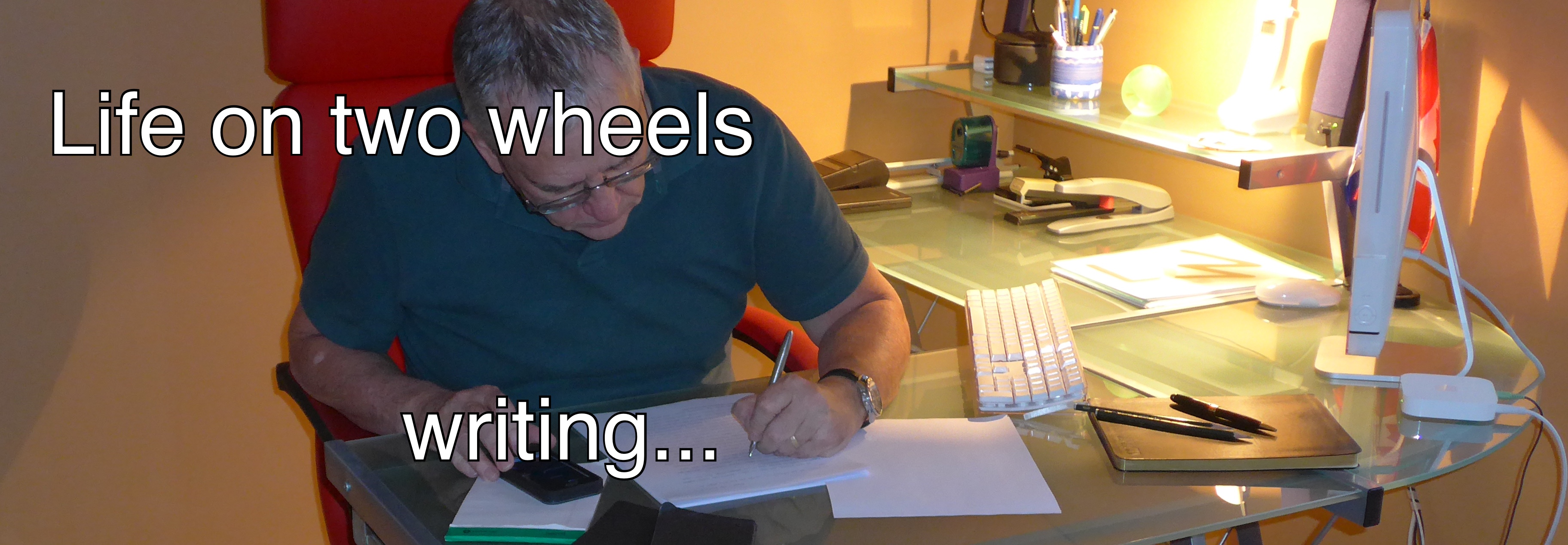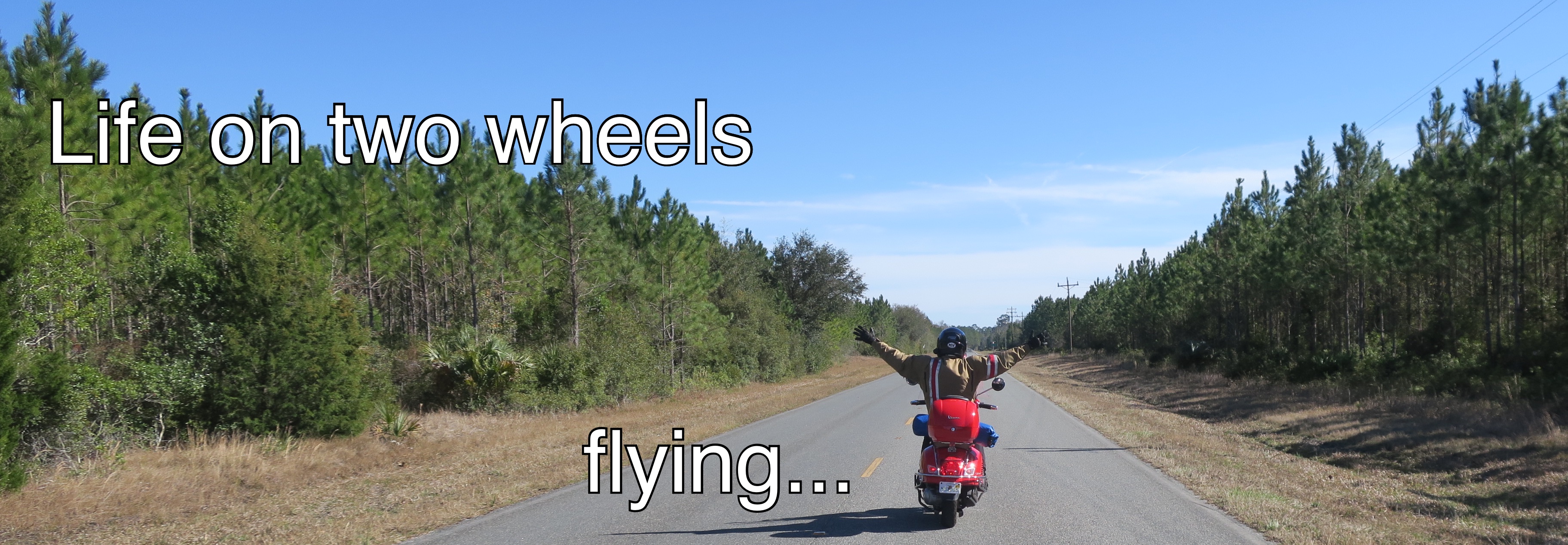41. Gloves
Gloves are for more than keeping your hands warm. Even when it's nice and warm, or even too hot, you've got to wear gloves. I love my summer gloves. I got them at the local Harley dealer on sale. They have padding in the right places, ventilation, and fit my hands nice and snug. I don't plan to fall off my Vespa, but I do plan to be protected against road rash just in case. The vast majority of people I see riding scooters must have really good plans not to fall off, because they they clearly don't have much of a plan plan to avoid injury if they do. Before next spring rolls around, I'll have purchased some nice winter gauntlets from Corazzo for those chilly spring commutes.
42. Surface scan for hazards
It's really important to scan for surface hazards continually. It doesn't matter how well you know your route. It never ceases to amaze me when I see hazards just spring up within 8 or 9 hours on my scoot commute route. New stretches of pavement torn out and filled in with loose gravel, built-up mud and crud from dump trucks and heavy construction equipment entering the roadway from a lot under construction, super slippery steel construction plates bridging a brand new trench, oil spills, debris fallen from trucks, road kill, overnight potholes, sunken sections of pavement caused by overloaded trucks... you name it, I've seen it. So scan, scan, scan, and be prepared to take evasive action.
43. Focus
One of the nice things about riding a scooter is the focus that it requires. In a car there are many things competing for your attention: the radio, CDs, passengers, adjusting the air conditioning, cell phones, the GPS... On your scooter, you are totally immersed in the ride, you become the ride, when the road twists and turns, you lean and flow through the turn, you're scanning two seconds ahead, assessing the surface of the pavement, watching how the traffic is flowing, keeping a sharp eye on vehicles that are poised to merge or turn in your path, checking your mirrors, covering your brakes and horn, checking your speed, plotting your course well in advance... The combination of all those things that you focus on is what makes riding such a compelling pleasure. You rarely get that driving a car.
44. Air pressure
When I got my scooter I made the mistake of riding without checking the air pressure in my tires. Fortunately nothing bad came of it and something good came of it. When I learned a little more about riding scooters, I got a pressure gauge and checked the tires. I found the pressure substantially lower than it should have been. When I got the pressure back up to where it needed to be, I was really shocked by how much better the bike handled. Now I check the tire pressure regularly. Fortunately I have a good air compressor in the garage so topping up the pressure is really easy to do.
45. Patching flats
Sometime in August I picked up a really good nail in the rear tire. A scooter is not like a car: you don't have a spare (though some vintage Vespas did have them), and pulling into a gas station somehow seems like less of an option. So I did something I had never done before. I went to the local Canadian Tire store and bought a tire plugging kit. Worked like a charm. Now I know how to fix my own flats, and I carry the tire plugging kit in the pet carrier along with a portable 12 volt compressor. I know other scooterists who do the same.
46. Tools to bring along
The tire plugging kit and the tire pressure guauge were added to a small tool kit that includes a hammer, socket driver, pliers, assorted screws, nuts and washers, Allen keys, screw drivers and other assorted hand tools all wrapped up in a flexible textile holder with velcro closure. When you ride a scooter or a motorcycle, you need to be a little more independent than the average driver. To get yourself thinking along those lines, you could do worse than reading Zen and the Art of Motorcycle Maintenance.
47. Block the footwell
So this heading is pretty cryptic. But you're about to learn something that you may thank me for if you own a Vespa, or come to own a Vespa, and you decide to tackle some of the essential modifications I suggest you make in these 'lessons learned' posts. If you decide to install a Stebel air horn, and you definitely should, or you decide to install a twelve volt outlet, you'll have to run new 12 volt positive and negative lines from the battery to the leg shield. Doing that requires that you disassemble the leg shield and the foot board. When you begin the reassembly process, if you fumble a screw or bolt, or anything else that's reasonably small, it will follow the nice curvy leg shield and rattle down inside the foot well. So when you're working in the leg shield and the floor board is installed, use sponges or rags to block the holes at the top of the floor board to prevent things you fumble from rattling down there. This winter when I tackle the modifications I'm planning, I'll finally remove the foot board and retrieve the headset screw I fumbled back in April. Sheesh! And that was the second time I had lost something to the leg shield in 24 hours. Like I said, earlier, I'm a slow learner.
48. Turn signal beeper
With few exceptions, motorcycles and scooters don't have self-cancelling turn signals. Vespa turn signals are also silent though some scooters have audible clicking sounds (like the Honda Ruckus). When you're focused on the ride, it's easy to forget to cancel the turn signal after a turn. Installing a turn signal beeper solves that problem. It's not rocket science, and you'll find all the parts you'll need at Radio Shack (now The Source in Canada) or your local electronics store, and all the instructions at Modern Vespa. Three of the really nice things about installing the beeper are i) you will never again forget to cancel the turn signal, ii) you don't need to check the instrument panel to know that you've successfully turned the indicator on, and iii) in the city the beeper alerts pedestrians to your presence and turning intentions. Plus, Plus, Plus.








No comments:
Post a Comment